Lasik Laser eye surgery is a common and popular vision correction procedure which corrects refractive errors including short-sightedness, far-sightedness, astigmatism and presbyopia. Highly precise lasers have led to truly life-changing results. In experienced hands, using strict protocols with individualised care and attention to detail, results are even more exceptional.
Laser eye surgery has been performed since 1987 and is a vision correction or refractive procedure which reduces or more commonly eliminates the need for corrective eyewear. The procedure uses lasers to make microscopic alterations in the corneal tissue at surface of the eye changing the overall power of the eye.
In most cases, life-changing results are possible following laser vision correction, and a person will either never need to wear glasses or lenses again or will need them much less frequently than before the surgery*.
If you are considering laser eye surgery, continue reading for more information about the different procedures available at Centre for Sight and performed by our laser vision correction specialists.
*Applies generally for distance vision. With age (40’s onwards) and hardening of the crystalline lens inside the eye, focus at near ranges can be difficult and reading glasses may be required. In some cases, hardening of the lens can change the overall power of the eye resulting in slight changes where glasses may again be required.
Centre for Sight surgeons have performed Laser eye surgery since 1990 and introduced Lasik to the UK in 1994 and IntraLasik in 2004. At Centre for Sight LASIK eye surgery is the most frequently performed laser procedure. The ‘Intra’ component denotes the use of the revolutionary Intralase iFS Femtosecond laser (Lasik technology) to create the highly precise and micro-thin flap at the front of the eye which is required to perform LASIK. The ‘LASIK’ portion is an abbreviation of Laser Assisted in Situ Keratomileusis. This signifies making the power change on the cornea under a micro-thin flap. Using an individualised treatment plan prepared by the treating Lasik surgeon, the Excimer laser is used to accurately re-sculpt the surface of the cornea, treating the overall prescription as well as correcting fine abnormalities to enhance visual outcomes with patients often obtaining better vision than they had with glasses and soft contact lenses!.
Laser vision correction alternatives to the LASIK procedure include LASEK, Transepithelial Photorefractive keratectomy (Transepi-PRK) and Epi-LASIK. At Centre for Sight, these procedures may be advised over Lasik in instances e.g. if there is an abnormality of the corneal epithelium, thin cornea, low levels of correction and corneal scarring or surface irregularity).
What is laser eye surgery?
Laser eye surgery a sub-specialisation of eye surgery is a type of vision correction or refractive surgery, which eliminates the need for corrective eyewear. In place since 1987, it is a procedure that uses lasers to make microscopic alterations in the corneal tissue at surface of the eye to completely correct refractive error (nearsightedness, farsightedness, astigmatism) and presbyopia (the need for reading glasses).
Types of
laser eye surgery
Choosing the laser surgery that’s best for you will depend on a number of factors, including your age, eye health, occupation, recreational activities and type of correction required. There are three main types of laser treatment for eyes, which will be discussed in detail later:
LASIK/IntraLASIK
TransEpi PRK
LASEK
Supracor LASIK
Which is the best type of laser eye surgery?
Each eye and each individual is different. For this reason, procedures performed at Centre for Sight are selected and customised specifically for each patient, taking into consideration specific characteristics including age, ocular condition, amount of correction required, corneal thickness, mechanical strength of the cornea and the magnitude of high order aberrations. LASIK eye surgery is the most popular laser eye surgery procedure worldwide with over 50 million people treated so far. Many patients consider this to be the best laser eye surgery option, because of benefits which include rapid visual recovery and healing (with a noticeable difference immediately) along with long term stability. At Centre for Sight all Lasik patients are treated with a femtosecond laser (Intralase) introduced by us to the UK in 2004. This we believe is the gold standard in ensuring absolutely safe, reproducible and reliable procedures. Some organisations and Lasik surgeon still perform conventional Lasik using blades to perform this type of surgery. To differentiate ourselves from blade techniques we use the term IntraLASIK. We shall discuss the benefits of the IntraLASIK later.
Benefits of LASIK
at Centre For Sight
We enjoy transforming patients’ lives through vision correction, vision restoration and maintenance of good eye health. There are a number of superb benefits to be enjoyed when having your LASIK laser eye surgery procedure performed at Centre For Sight. Here are some:
Experts
Centre for Sight’s medical director and ophthalmologist Sheraz Daya is the medical monitor for Bausch and Lomb Technolas Lasers which are used at Centre for Sight. As a laser eye surgeon himself for over 30 years, he is actively involved in the development of the company’s laser platforms including their recent addition, “Transepithelial Photorefractive Keratectomy” (TransEpi PRK). The design, development and study of this refractive procedure on the eye’s cornea for the Bausch & Lomb Teneo excimer laser was performed at Centre for Sight.
Pioneers in surgical technology
Centre for Sight’s medical director Sheraz Daya has performed laser refractive surgery since 1990 and was the first UK surgeon to perform Lasik (1994) and also introduced the use of the femtosecond laser for Lasik surgery (Intralasik) to the country in 2004. He pioneered the use of Bausch and Lomb’s Zyoptix wavefront Custom Lasik to treat high order aberrations and Aspheric laser technology to reduce spherical aberration and avoid halos and glare. He has trained numerous eye surgeons in the technique worldwide and is often asked to speak on laser vision correction surgery at international meetings. As a reference centre for Bausch and Lomb Centre for Sight is always at the forefront of Lasik technology.
Fellowship Surgeon Led
Our laser eye surgeons are all Fellowship-trained (super-specialised beyond basic eye surgery training) in Cornea and Refractive surgery. Preoperative assessment (Lasik consultation)and plans for surgery are carried out in advance directly by an eye surgeon, giving you added reassurance that your evaluation has been as thorough as possible.
Safety
All LASIK patients at Centre for Sight undergo laser eye surgery with the Intralase femtosecond laser, a much safer form of laser that we introduced to the UK ourselves and has now become the gold standard. Our infection rate is zero in over 20,000 cases.
ISO 9001, 14001 and 27001 accredited
Very few providers in the UK hold all this multiple certification which externally verifies the high standards of care provision at Centre for Sight.
Rated “Outstanding”
for being Well Led by the Care Quality Commission, the regulator for Clinics and Hospitals.
Reputation
Centre for Sight has an international reputation and is a reference centre to the ophthalmic industry with regular visited by eye surgeons who come to learn about our procedures and processes.
Trouble-shooters
We regularly provide second opinions and treat corrective eye surgery complications that have resulted from procedures performed at other centres. Advanced eye surgeon expertise at all levels.
24/7 availability
We understand the need for patients to be able to contact us in an emergency with surgeons available if needed.
High standards
In our pursuit of perfection in keeping a surgical procedure safe, we constantly review what we do and strive to do better often exceeding minimum standards, raising the bar when it comes to quality care.
0% Interest Finance
Affordable High-end Laser and Lasik surgery with our finance plans****(Terms and conditions apply)
Laser eye surgery procedure
5 simple steps
We usually operate on both eyes on the same day. However, as a safety precaution Centre for Sight ensures that each eye is treated as a separate procedure with separately sterilised instruments and new disposable instruments.
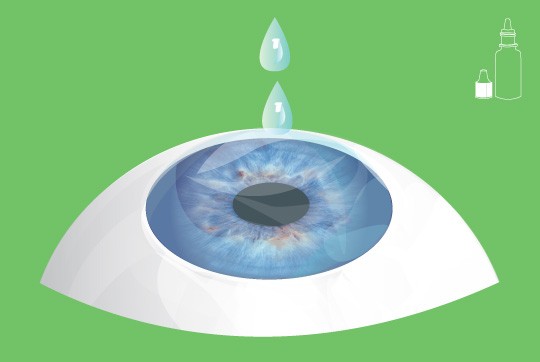
Before your procedure numerous checks are performed and we always verify that your treatment plan matches correctly with your test results. At each procedure the laser is calibrated and new disposable instruments are prepared.
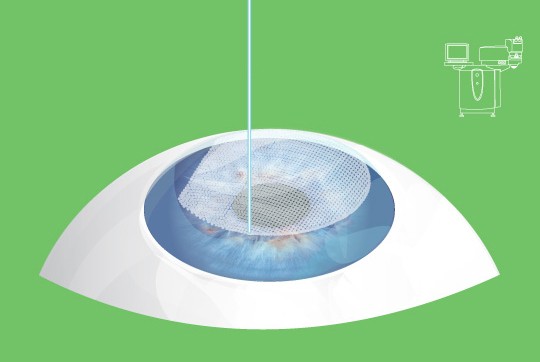
A strong numbing eye drop is used along with strong antibiotics to prevent infection. The area around the eye is cleaned thoroughly with a disinfectant. To prevent the eye from closing during the procedure a special eyelid holder is used. During laser eye surgery you will be asked to look as steadily as you can at the centre of a flashing red light.
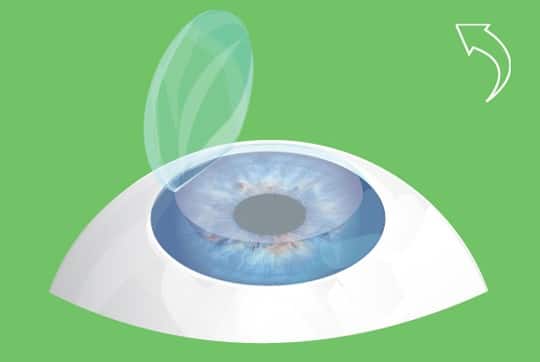
IntraLASIK uses a combination of TWO lasers. 1.- The Intralase femtosecond laser is initially used to create the corneal flaps at the exact dimensions and depth needed. 2. The excimer laser changes the shape of the cornea under the flap. The femtosecond laser creates thousands of microscopic bubbles to fashion the flap at a specified depth in the cornea for each eye. Once the surgeon is happy with the quality of the flap a second set of more condensed bubbles created vertically forms the edge of the flap.
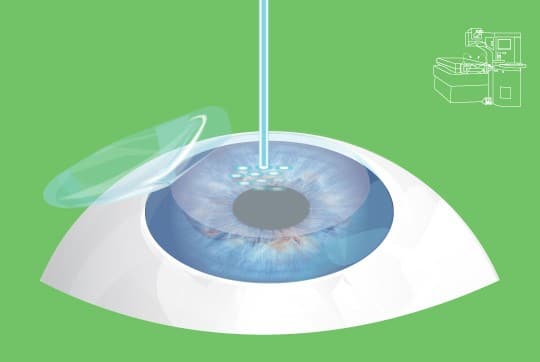
After the laser bed moves to the Technolas Excimer laser, iris recognition technology recognises the eye from exported images taken at consultation and ensures accurate eye tracking and precise delivery. (Each iris is unique and therefore there is no chance of mixing up eyes or treatments). After carefully lifting the flap, the laser rapidly reshapes the inner cornea according to your own unique prescription providing optimal asphericity and reducing wavefront abnormalities where required.
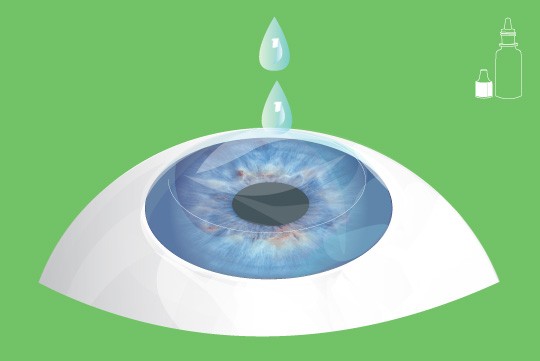
Once the laser reshaping is completed the flap is replaced and allowed to dry. Eye drops are used to prevent infection.
Common questions about laser eye surgery
To find out whether you’re a suitable candidate you can use the Am I Suitable questionnaire and our staff will respond with some specific treatment options. Although each case is assessed individually, generally speaking you will meet the criteria for laser eye surgery if you can say yes to the following:
- You are over 18 years old (if required for your career) – otherwise 21 and above
- You are Short-sighted, Far-sighted or have Astigmatism
- Your vision has remained the same over the past 12 months (less than 0.50D change in the last year)
- You have a good eye health and no autoimmune diseases
- You are not pregnant or nursing
Lastly, you’ll also need to have an extensive 2-3 hour period of investigation followed by a consultation with a surgeon to see whether your eyes are suitable for surgery. To save time, this may be divided into preliminary screening tests and if suitable you will see the surgeon for a lengthier visit at a later date.
Safety is paramount
At Centre for Sight, we are very selective about those who are eligible. Safety is our number one priority, and we make our decisions based on scientific evidence, delaying (and first treating where appropriate) or declining those who might be at increased risk.
There’s a good chance we’ll be able to suggest other treatments based on your specific eye issue. Your surgeon will talk you through the options during your consultation.
Before your consultation: how to prepare
If you are a contact lens wearer, we ask you to stop wearing your contacts for at least one week if they’re soft lenses, and four weeks if they’re hard/gas permeable lenses. This helps us to accurately assess your eye and the degree of correction required.
During the evaluation, we shall test your vision with and without your glasses. You will also be checked on a machine called an autorefractor. Other tests include:
- Contrast sensitivity
- Corneal topography (the shape and curvature of your cornea) – using 4 different methods
- Corneal thickness
- Mechanical strength of the cornea
- Eye pressures
We'll also measure the way a wavefront of light passes through the cornea and the crystalline lens using a method known as aberrometry.
At the same time we capture details of your iris for our Advanced Controlled Eye Tracker, a tool that helps track the eye and provide accurate laser spot delivery during surgery, even with finest and fastest of eye movements.
In addition, we shall also evaluate you for dry eye. Lastly, we use special drops that dilate your pupils and paralyse your internal muscles and this allows us to both check the true power of the eye when in a relaxed state and examine the retina at the back of the eye to exclude any potential issues.
Once your surgeon has finished the assessment, they will recommend the best treatment option for you (if any) and talk you through the benefits, alternatives and risks as well as the post-operative and recovery phase.
Although every patient is different, the vast majority of InterLASIK patients achieve legal driving vision or better by the very next day. In a very small number of patient’s vision will take longer to recover, possibly up to 10 days.
At Centre for Sight, our prices are always transparent with no hidden extras. We also have finance options to make your surgery more affordable. To learn more, see our page on pricing.
Most health insurance companies do not cover laser eye surgery where the purposes for treatment are elective vision correction.
Centre for Sight has always had the very highest standards in hospital safety and procedures and Intralase decreases the risk of infection further. IntraLASIK also uses one-time use disposable instruments, further improving this level of safety.
Laser eye surgery with appropriate patient selection and treatment provides excellent outcomes. With current technology, serious problems are extremely rare. There are however some side effects that you must be aware of:
Dry eye: Laser eye surgery affects the nerve receptors that sense dry eye and as a result tear production can be temporarily reduced. To compensate for this, artificial tears (provided) are required for at least 6 to 12 weeks whether or not there are dry eye symptoms. Consider there may not be symptoms as the nerve endings will not have recovered. As nerve endings and receptors recover, dry eye improves. Patients at risk of severe dry eye are identified at consultation and either treated for dry eye beforehand or declined for laser surgery.
Over-correction, under-correction, and regression: It is possible but very unusual for the eye to be overcorrected, under corrected or slip back (regression) slightly over the first 6 weeks. Much depends on how the eye responds to surgery, how it heals and whether or not artificial tears are used. Dry eye (symptomatic or not) can result in regression. If this is significant and affects the visual outcome, an enhancement will be performed to correct this at 3 months as long as the eyes are stable. To reassure you, this occurs infrequently at Centre for Sight with less than 1% of our patients requiring an enhancement and there is no further charge for correction within the first year of treatment.
Night vision disturbances: It is normal to experience some initial disturbance after the procedure which rapidly decreases over a period of days to two weeks. This occurs from mild swelling of the cornea and subsequent light scatter. Long term disturbances are rare with the correct treatment choice being tailor-made for each eye (i.e. with Aspheric and Wavefront Aspheric treatments).
The main danger or disadvantage is that, as with any technically complex eye surgery, rare problems with vision can occur. This is usually at the stage when the surgeon creates the flap, which can affect your permanent vision. The risk is greatly reduced by using femtosecond laser technology in the hands of an experienced surgeon and reputable provider like Centre for Sight.
No, the treatment itself is completely painless. Large amounts of anaesthetic drops are used which completely numb the eye. You might feel a bit of pressure at the very beginning when the Intralase laser is used to create the flap. After the procedure some patients describe a gritty sensation like a lash in their eye. Some feel a bit of stinging which lasts for a few hours. For this reason, we ask patients to have a nap for about four hours after the procedure. Paracetamol or Ibuprofen is the most you will need to manage the discomfort.
Immediately after surgery: your eyes will be protected with dark glasses with an elastic band to prevent you from accidentally rubbing your eyes. You'll be seated in a reclining chair with your eyes closed. Your eyes will be examined a little while later to ensure you have had an improvement in vision and that the corneal flaps are fine. It may seem like you're looking through a fog at first, but this will clear over the next few hours. Before you leave, we'll give you something to eat and a well-earned cup of tea or coffee!
You'll need to arrange to have someone to take you home as you won't be able to drive and you may also feel drowsy from being sedated.
Aftercare: We shall provide you with drops and clear verbal and written instructions on how to use them, along with a list of Dos and Don'ts. A day or two later we shall examine your eyes again and after that you will have a number of follow up appointments to check how your eyes are healing.
It’s impossible to blink during the surgery as we use a special clip that gently holds your eyelid open.
It usually takes less than 15 minutes for both eyes. However, in order to prepare you for the procedure and ensure recovery you will be at the centre for 2-3 hours
Firstly, it’s important to avoid dusty or smoky atmospheres for the first two weeks after your surgery. Here are some common questions about what you can and can’t do after surgery:
- Can I shower after laser eye surgery? You can shower the next day but you must make sure your eyes are closed.
- How long after laser surgery can I drive? When you are comfortable with your new vision, and if it meets the level required to meet the driving standard.
- How soon after surgery can I go back to work? The next day if you are comfortable. Make sure you are able to take your eye drops regularly as instructed.
- Can I use a computer after laser eye surgery? The next day but be sure to take breaks every 20 minutes and close your eyes for 20 seconds. Make a conscious effort to blink more often.
- When can I exercise at a moderate pace? After one week.
- What about exercising at an intense level? Please wait for two weeks and use a headband to absorb any perspiration to prevent this from entering your eyes.
- When can I return to playing sports? You may return to all sporting activity after TWO weeks. For contact sports, you are advised to use protective eyeglasses. Polycarbonate sports glasses are recommended.
- Can I go swimming after laser eye surgery?After three weeks but with goggles, four weeks without.
- When can I go Scuba Diving? After 4 weeks.
- When can I wear eye make up again?Please do not wear mascara or eyeliner for TWO weeks. For all other make-up, please wait for two days. Consider having your eyelashes tinted before surgery. When removing eye make-up, use your usual make-up remover gently and finish it by using preservative-free eye-lid cleansing lotion.
- When may I return to activities such as housework, shopping, and gardening? There are no restrictions, and you may return to these activities the following day. You must keep away from smoky and dusty environments and do not forget to wash your hands before using your eye drops.
We have three branches in the UK, located in London, Surrey and Sussex. To find your nearest Centre For Sight, see our Contact page.
- Pallikaris IG, Papatzanaki ME, Stathi EZ, Frenschock O, Georgiadis A. Laser in situ keratomileusis. Lasers Surg Med. 1990;10(5):463-8. PubMed PMID: 2233101. PubMed
- “Education Education Education” 14 November 2008. Archived from the original on 3 December 2013. Retrieved 3rd January 2019. OptometryToday
- Dry Eyes And LASIK. Marilyn Haddrill with contributions by Robert L. Epstein, M. All About Vision
Author Information
Authored by Sheraz Daya MD FACP FACS FRCS(Ed) FRCOphth, Consultant Ophthalmic Surgeon & Medical Director, January 2019.
As an authority and leader in refractive surgery he has served on the Royal College of Ophthalmologists Refractive Surgery Working Group which developed the Standards for Refractive surgery including Implantable Contact Lenses /Phakic IOL. He has also served on numerous boards including the refractive committees of the European Society of Cataract Surgeons and Royal College of Ophthalmologists.
References:
Next review due January 2024.
Consultants

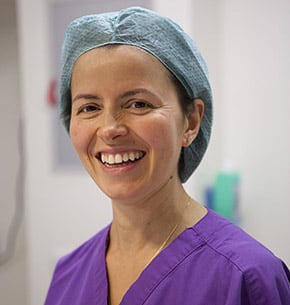

What our Patients say...
Find out what our patients say about us. We are dedicated to providing exemplary eye care that exceeds our patient's expectations.
Read All Patient Stories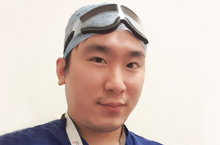
“It has been very liberating not having to wear glasses .” Dr Sebastian Ho Orthopaedic Surgeon from Sutton Dr Sebastian [...]

“My vision is now amazing!” Mark Morris Builder from Crawley Lottery winner has Laser Eye Surgery! Laser Eye Surgery patient [...]
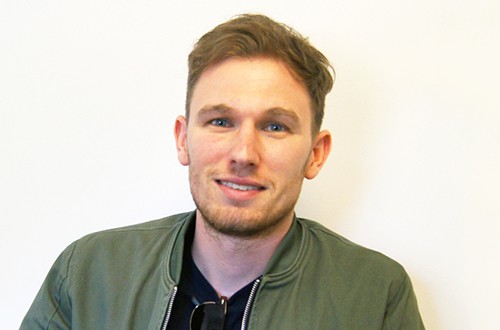
Alex was keen to have Laser eye surgery after struggling with vision at school and his day-to-day leisure activities. After [...]

Having done her research, through recommendations and good reputation, Rebecca decided to take the plunge and have laser eye surgery [...]
Rate Us
I understand that all my data, clinical and otherwise will be protected under GDPR. I understand my data may used for the purposes of quality improvement and advancement of eye care such as audit. This is a component of good clinical governance and measures will be taken to ensure my data is not identifiable.
